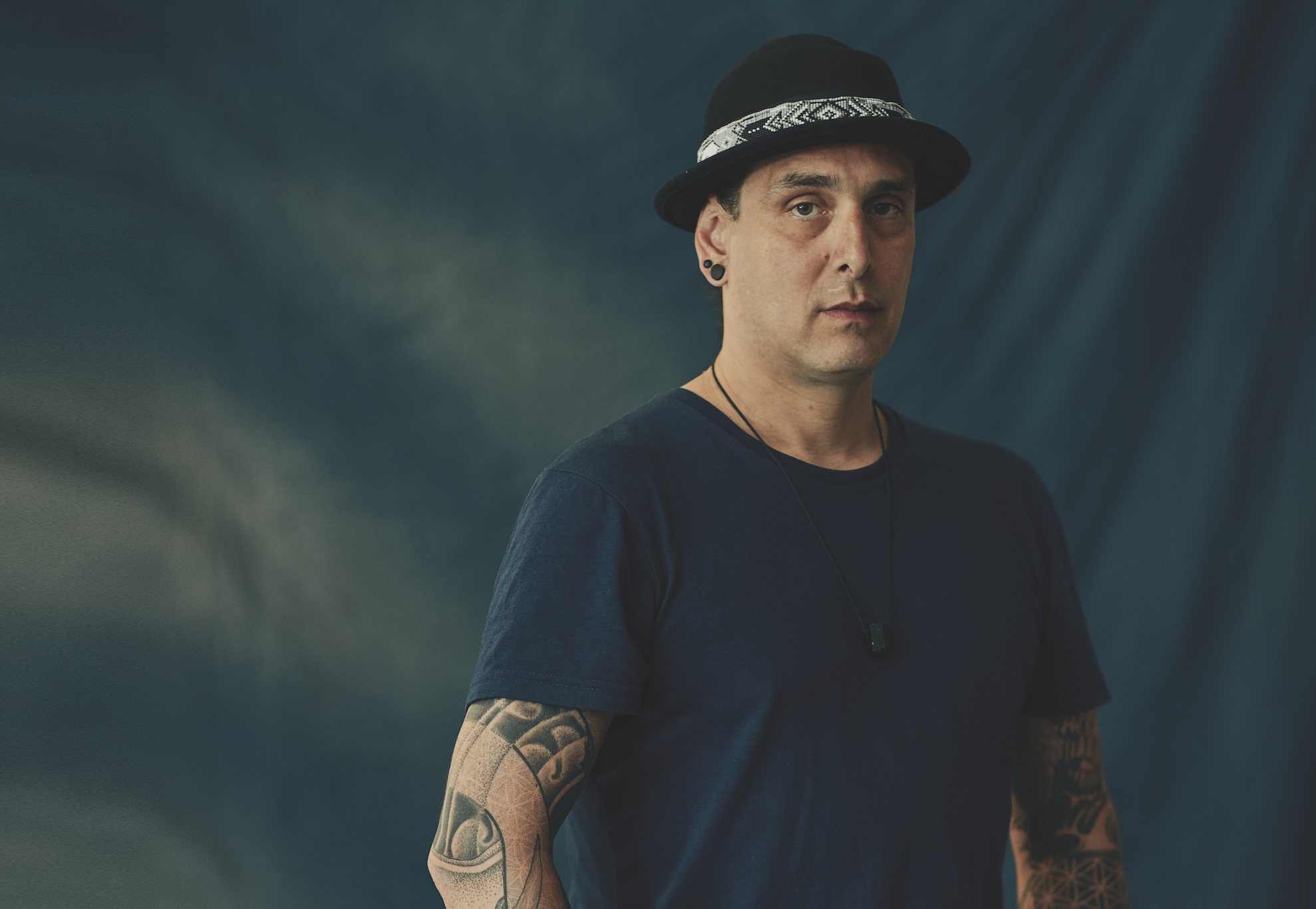Chippewa artist Jay Soule, who also goes by Chippewar, strives to spark conversations on how Indigenous voices can be uplifted and empowered. The Sixties Scoop survivor is particularly known for his “social disruption campaigns” in public spaces, including a billboard in downtown Toronto debunking the notion that taxpayers’ money goes directly to Indigenous people. He spoke to Celina Gallardo.
Celina Gallardo: How would you describe your style?
Jay Soule: I’d describe it as pop art with an Indigenous twist. I primarily paint acrylic on wood panel as well as skateboards. I also produce a full line of clothing and apparel.
CG: What is your thought process for your pieces?
JS: Initially, it starts out as frustration and anger about things I’m seeing happening around me, and then I start trying to channel that creatively.
CG: What barriers do you face within the Canadian arts scene?
JS: It’s super difficult because my work is pop art. Most institutions and galleries don’t really understand that you can be Indigenous and do any artwork you like. It doesn’t have to be specifically a traditional art form that fills those institutions and galleries. That’s a huge challenge in getting recognition for my work. Getting even a gallery show is really difficult. I’ll go into a space where I see lots of Indigenous art and I’ll talk to them and I’ll show them my work. And they get it. They see the humour, they see the sadness, they see, perhaps, even anger, and they’re not interested in sharing it.
CG: Where do you put your social disruption pieces?
JS: Whether it’s on a wall where I have permission to do the work or I’m renting a billboard or using my community bulletin boards, I’m doing it in a way that is legal and doesn’t disrupt private property. I’ve had [my store] spray painted, I’ve had my windows broken before by accident. And that’s quite frustrating to deal with as a small business. If you’re a building owner and someone’s vandalizing your property, you’re going out-of-pocket to fix that.
CG: Why do you use popular western movie posters as a basis for your paintings?
JS: One is to reclaim some of our identity through film and television. For the last 100 years, we’ve been spoken for and portrayed in a certain way by Hollywood. It’s also about reclaiming some of the stories, and cultural appropriation and how we’re represented in film and television. I’m also just a huge movie fan. I didn’t grow up in my community. I grew up watching film, television and music and not knowing anything about my Indigenous culture.
CG: How do you educate yourself before starting any artwork?
JS: I’m just a giant nerd. I go down the rabbit hole of research, reading articles, books and also talking to people. I try to talk to as many Indigenous people in the community as possible about the issues I’m looking to raise awareness about.
CG: How do you define cultural appropriation?
JS: I’ve created a website called reclaimindigenousarts.com and it clearly lays out what cultural appropriation is, who it hurts, how it hurts, why it’s harmful, and why you shouldn’t participate in cultural appropriation, not just of Indigenous art. [The arts] is [the Indigenous population’s] largest independent economy, and because of cultural appropriation, it has been threatened for decades.
CG: A lot of your work aims to make privileged people feel uncomfortable, but not necessarily attacked. What are the benefits of this kind of approach?
JS: Understanding your privilege allows you to see from the perspective of the people who are telling you that you’re hurting them and why it hurts.
CG: How can non-Indigenous people support Indigenous artists?
JS: Support our work. Don’t support the culture-appropriated work coming in from overseas. Buy our work at fair-market value because it has been so undervalued from decades of cultural appropriation and theft into national galleries and museums.
CG: What’s next?
JS: I think right now I’m on a pretty good path. I really enjoy doing movie poster work. I have some installation work planned for next summer. I want to explore the connection between religion and colonization. Everyone has the right to practice whatever they’d like, however, when it’s connected to the atrocities that have happened based on religion, I think it’s important to have those conversations.
This interview first appeared in the September 2019 issue of Broadview with the title “Jay Soule.” For more of Broadview’s award-winning content, subscribe to the magazine today.














